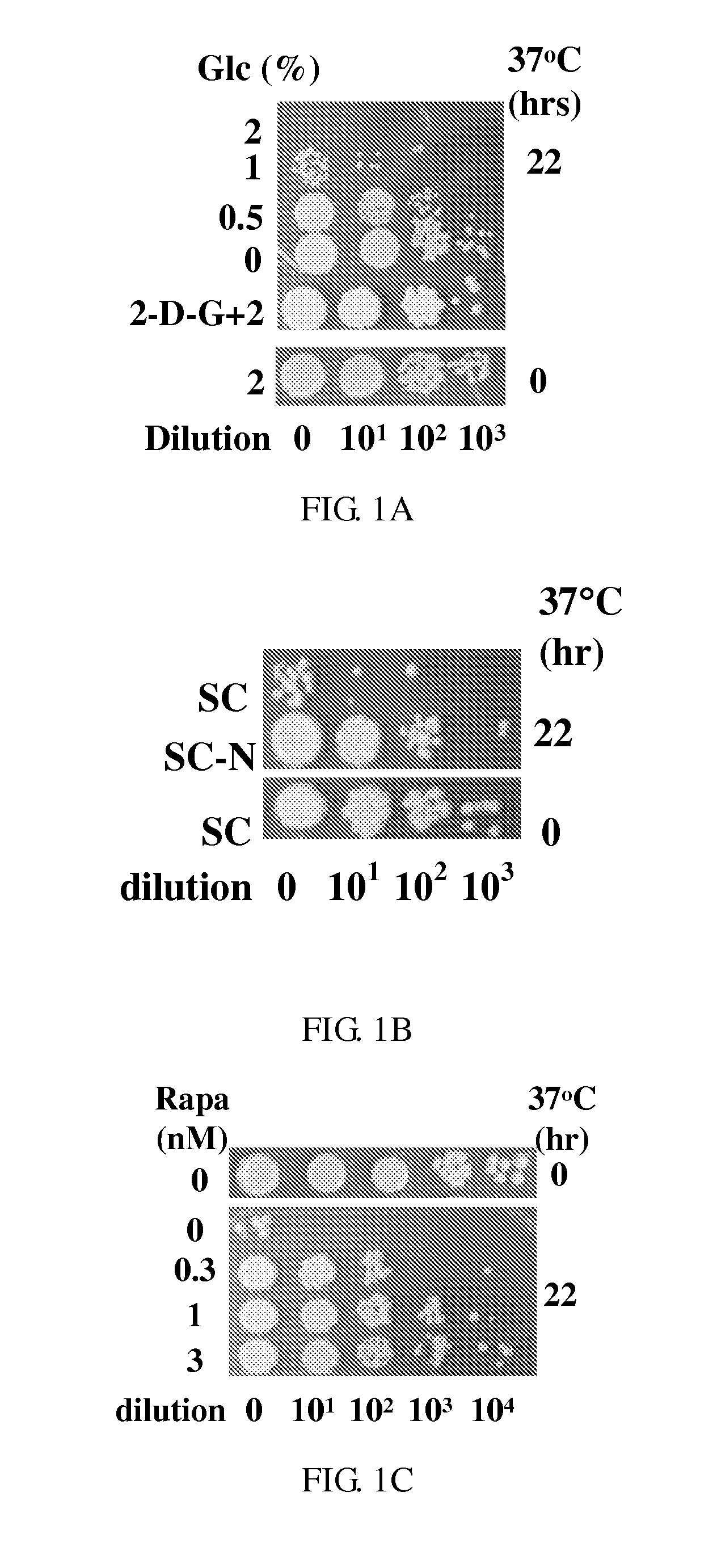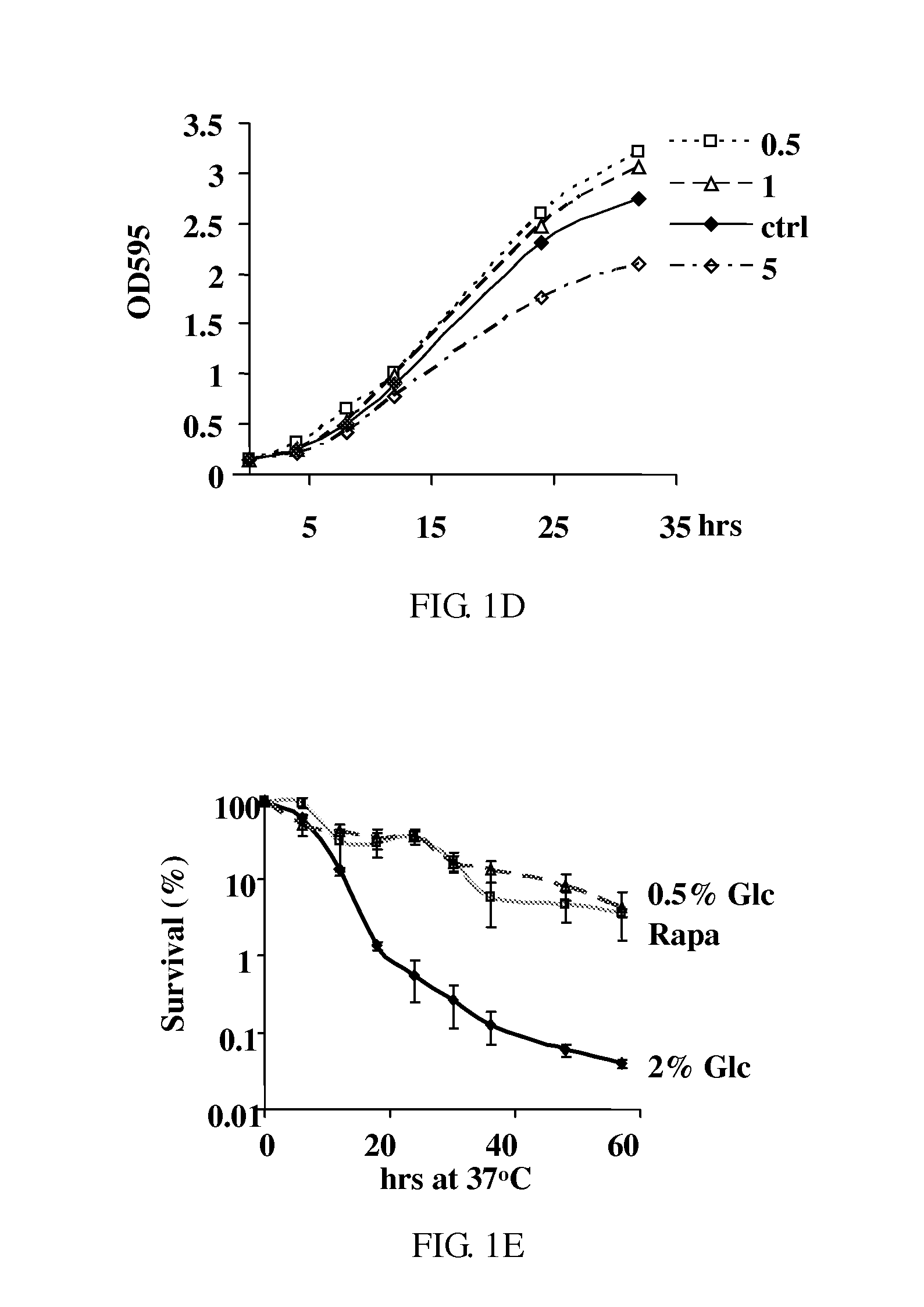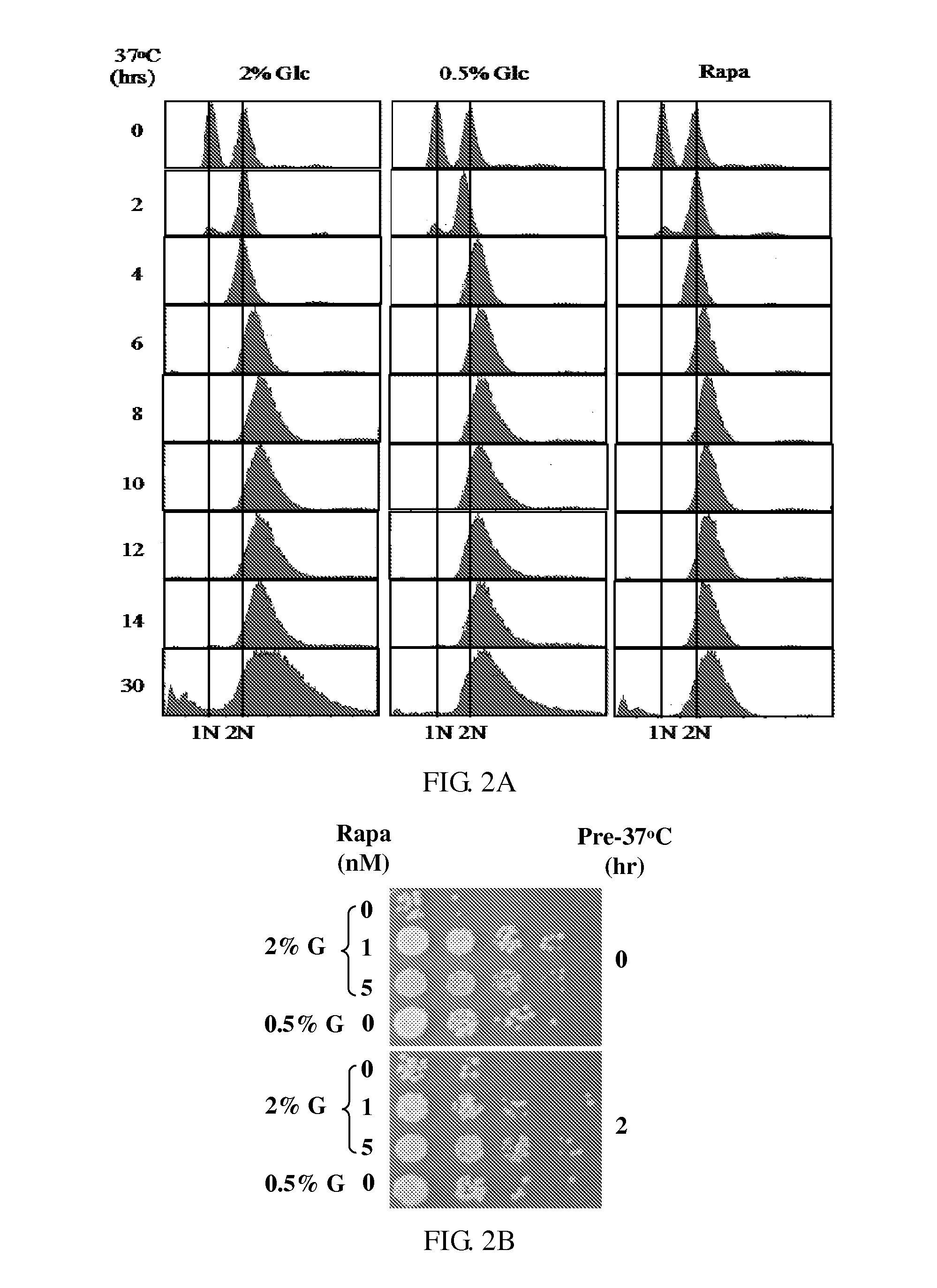Novel Anti-aging agents and methods to identify them
a technology of anti-aging agents and anti-aging state, applied in the field of new anti-aging agents, can solve the problems of gradual functional decline that characterizes the aging process, increases the ros production and subsequent accumulation of more mutations, and is particularly vulnerable to accumulation of damage, so as to prevent deterioration of the senescent state, promote mitochondrial function, and maintain senescence.
- Summary
- Abstract
- Description
- Claims
- Application Information
AI Technical Summary
Benefits of technology
Problems solved by technology
Method used
Image
Examples
example 1
Identification of Agents that Prevent Cell Death in cdc13-1 Model Using Cell Surviving Assays (as Shown in FIG. 19)
[0261]For high-throughput screening of compounds or compositions that improve mitochondrial function, prolong the cell cycle arrested state and prevent cell death in cdc13-1 model, cdc13-1 cells are activated from −80° C. stock first by streaking them on a fresh YEPD or yeast complete medium (YC) plate and then incubating at the permissive temperature (about 24° C.) for 3 to 5 days until single colonies formed. A few yeast colonies are picked and cultured overnight in the same liquid medium at a permissive temperature 24° C. The overnight cultures are diluted into fresh medium from 1:2 to 1:20 (optimized at about 1:10 for cdc13-1 strain).
[0262]Yeast cells are transferred into 96-well plates or any suitable formats of plates. Prospective compounds or compositions, for example, serially diluted drugs, compounds, peptide libraries or other libraries by H2O, DMSO (dimethyl ...
example 2
Identification of Agents that Prevent cdc13-1 Cell Death Using an Apoptotic Assay
[0266]Cell death in cdc13-1 exhibits apoptotic markers. This characteristic can be employed for high-throughput screening since it takes less time than the cell surviving assay mentioned in Example 1. It can also be used for confirming positives identified from the high-throughput screening in Example 1. In addition, this assay can also be used to screen for agents that inhibit apoptosis.
[0267]After incubating at a non-permissive temperature (about 37° C.) for a day (about 18-24 hrs), the cdc13-1 cells with compounds are stained with FITC-conjugated z-VAD-FMK (a suicide substrate that only binds to activated caspase), or other suitable apoptotic detecting agents, for 20 min in the dark. Cells may be washed once with Phosphate Buffered Saline (PBS). Plates are read by a fluorescent microplate reader. The negative control (cells in the absence of the compounds or compositions screened) would have a high F...
example 3
Identification of Agents that Prevent cdc13-1 Cell Death by Measuring ROS (as Shown in FIG. 20)
[0269]Cell death in cdc13-1 exhibits dramatically elevated ROS levels. This characteristic can be used to search molecules that inhibit cdc13-1 cell death. The ROS assay takes less time than the cell surviving assay described in Example 1, and can be used in the high-throughput screening, as well as in confirming the primary candidates identified from high-throughput screening of Examples 1 and 2. In addition, this assay can also be used to screen for antioxidants.
[0270]FIG. 20 illustrates the procedure. After incubating at a non-permissive temperature (37° C.) for a day, the treated cells are stained with dehydrorhodamine 123 (or other suitable ROS detection agents) for about one hour in the dark. Plates are read by a fluorescent microplate reader. The negative control (i.e., cells in the absence of the compounds or compositions screened) should have high levels of ROS released during cel...
PUM
| Property | Measurement | Unit |
|---|---|---|
| pH | aaaaa | aaaaa |
| pH | aaaaa | aaaaa |
| pH | aaaaa | aaaaa |
Abstract
Description
Claims
Application Information
 Login to View More
Login to View More - R&D
- Intellectual Property
- Life Sciences
- Materials
- Tech Scout
- Unparalleled Data Quality
- Higher Quality Content
- 60% Fewer Hallucinations
Browse by: Latest US Patents, China's latest patents, Technical Efficacy Thesaurus, Application Domain, Technology Topic, Popular Technical Reports.
© 2025 PatSnap. All rights reserved.Legal|Privacy policy|Modern Slavery Act Transparency Statement|Sitemap|About US| Contact US: help@patsnap.com



